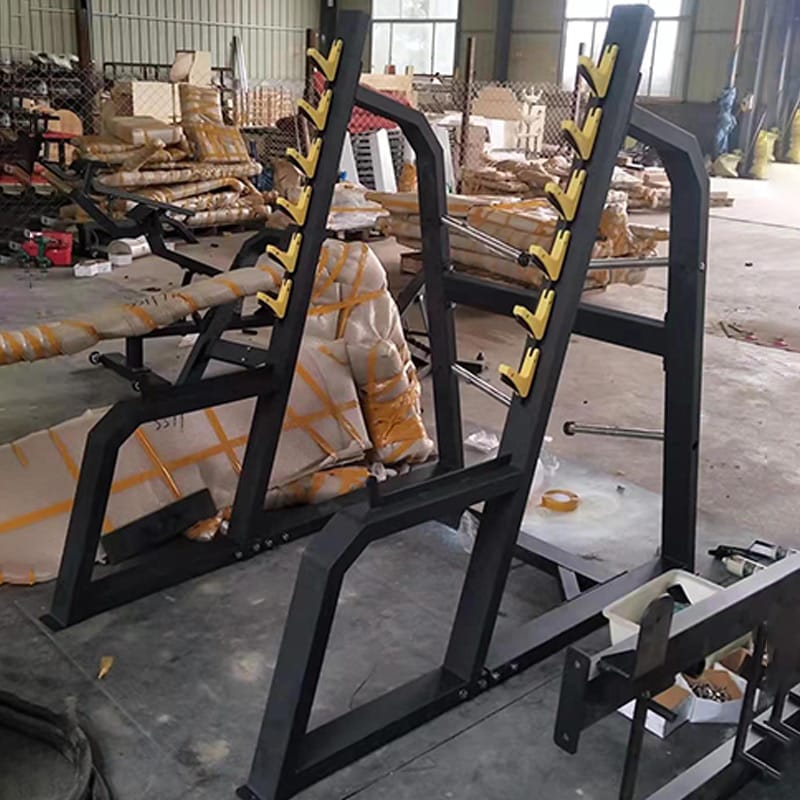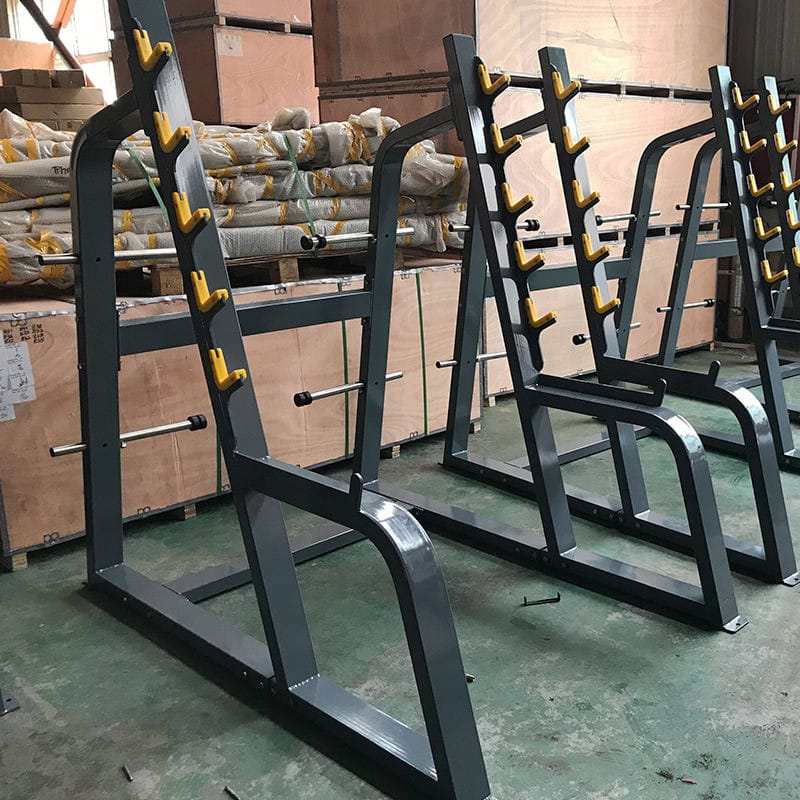A Squat Rack, also known as a Power Rack or Power Cage, is a crucial piece of equipment in gyms, particularly for strength training and weightlifting exercises. Here’s an overview:
Equipment Description:
- Frame: Typically made of sturdy steel with vertical uprights and horizontal safety bars.
- Adjustability: The height of the safety bars can be adjusted to accommodate different exercises and user heights.
- Safety Bars: Positioned inside the frame to catch the weight bar in case of failure during squats or other exercises.
- Barbell Supports: Usually equipped with adjustable barbell supports to hold the weight bar securely.
- Pull-Up Bar: Some models include a pull-up bar across the top for additional exercises.
Uses and Exercises:
- Squatting: Use the safety bars to perform squats, adjusting the height to ensure proper depth and safety.
- Bench Press: Set up a bench inside the rack for bench presses, using the safety bars to catch the barbell if needed.
- Overhead Press: Perform overhead presses inside the rack for stability and safety.
- Deadlifts: Use the rack for setting up and performing deadlifts, ensuring the barbell is safely placed between sets.
Benefits:
- Safety: Provides safety bars to catch weights, reducing the risk of injury during heavy lifts.
- Versatility: Facilitates a wide range of exercises including squats, bench presses, overhead presses, and more.
- Stability: Offers a stable and controlled environment for lifting heavy weights.
- Progression: Allows for progressive overload by safely lifting heavier weights over time.
Tips:
- Safety First: Always use safety bars and set them at an appropriate height before starting your exercise.
- Proper Form: Focus on maintaining proper form and technique to maximize effectiveness and prevent injuries.
- Spotter: When lifting heavy weights, especially during bench presses, it’s advisable to have a spotter for added safety.



















































Reviews
There are no reviews yet.